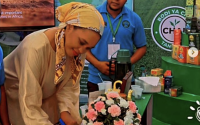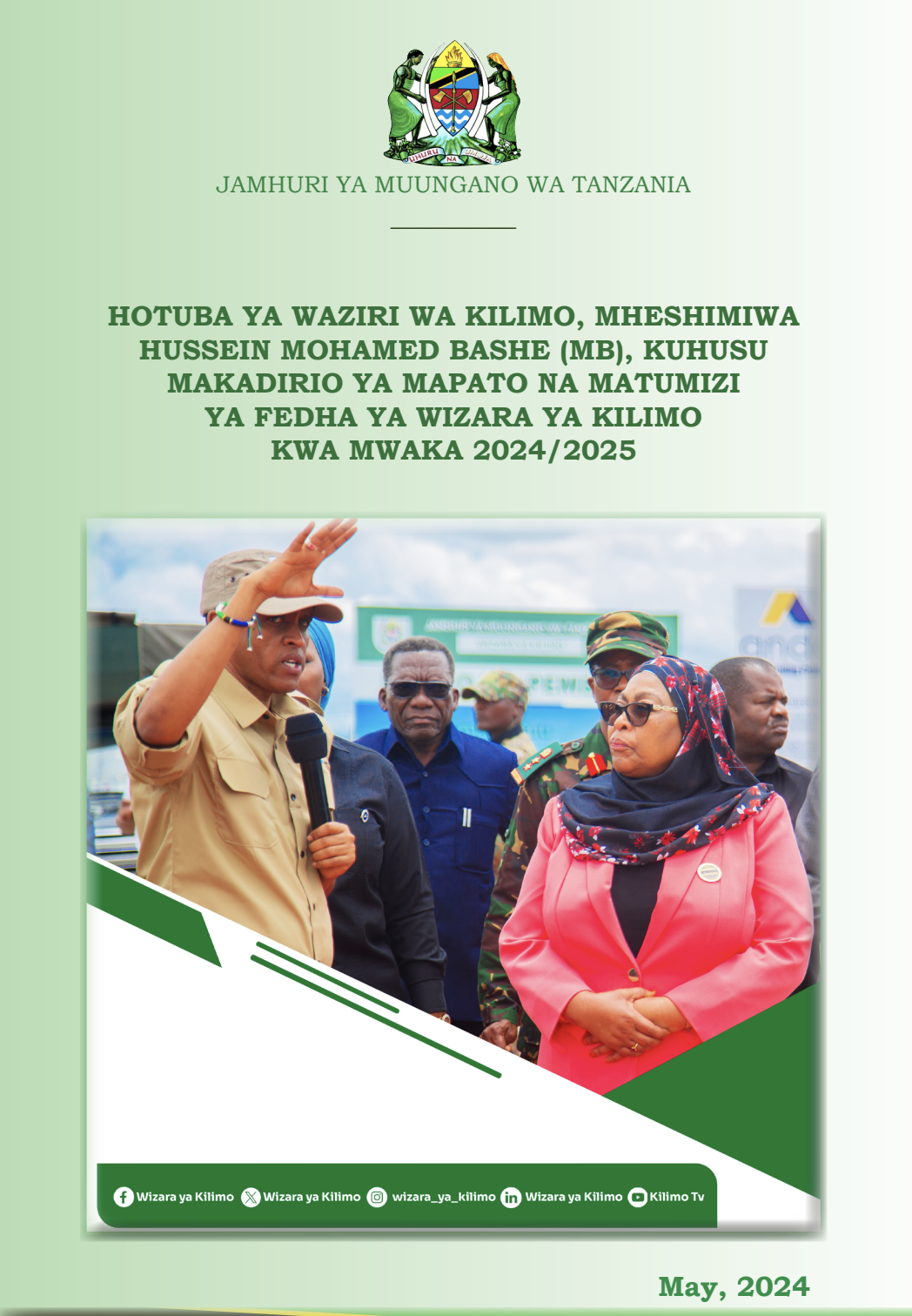Soy Cultivation in Tanzania: From Experimental Beginnings to the Expectant Future of Agricultural Prosperity
Kilimokwanza.org Team
The history of soy cultivation in Tanzania, like in many other African countries, is relatively recent compared to its long history in East Asia, where it has been cultivated for thousands of years. Soybeans (Glycine max) were introduced to Africa in the early 20th century and have since become an important crop in several countries, including Tanzania, for both food security and economic development. :
Early Introduction and Experimental Phase
The early introduction and experimental phase of soy cultivation in Tanzania, then known as Tanganyika, marks a foundational period in the agricultural history of the region. This phase is characterized by its exploratory nature, as agricultural experts and colonial authorities sought to understand the potential of soybeans in the local agronomic and climatic conditions.
Introduction of Soybeans to Tanzania
- Colonial Agricultural Initiatives: During the colonial era, the British colonial administration was keen on introducing cash crops that could thrive in the Tanganyikan climate, contributing to the colony’s economic outputs and possibly improving the nutrition of the local population. Soybeans, known for their nutritional value and versatility, were identified as a potential crop that could meet these objectives.
- Initial Importation: The exact timeline of soybean introduction remains vague, but it is widely accepted that the first soybean seeds were brought into Tanganyika in the early to mid-20th century. These seeds were likely sourced from other regions where soy cultivation was already established, such as Asia or other parts of Africa where experimental cultivation had shown promise.
Experimental Cultivation Efforts
- Role of Agricultural Research Stations: Agricultural research stations, established by the colonial administration, played a pivotal role in the initial cultivation efforts. These stations were tasked with conducting trials to assess the viability of soybeans in different environmental and soil conditions across Tanganyika. They experimented with various soybean varieties to identify those that could best adapt to local conditions.
- Collaboration with Colonial Agricultural Services: The experimental cultivation of soybeans was not a solitary endeavor of the research stations but involved collaboration with colonial agricultural services. These services provided logistical support, including the distribution of seeds to trial locations and the mobilization of resources necessary for the cultivation and study of the crop’s performance.
- Objectives of the Experimental Phase: The primary objective was to evaluate the adaptability of soybeans to the Tanganyikan climate and soils. This included assessing resistance to local pests and diseases, yield potential under different environmental conditions, and the crop’s overall viability as a food and cash crop. The secondary objective was to explore the potential for soybeans to improve dietary nutrition among the local population, given their high protein content.
Challenges and Observations
- Climatic and Soil Variability: One of the significant challenges encountered during this phase was the variability in climatic and soil conditions across different regions of Tanganyika. This variability necessitated extensive trials to identify soybean varieties that could perform well under diverse conditions.
- Learning and Adaptation: The experimental phase was a learning curve for both the colonial authorities and local communities involved in the trials. It led to a better understanding of the agronomic practices suitable for soy cultivation, such as the need for specific planting times and soil fertility management to optimize yields.
Legacy of the Experimental Phase
The early introduction and experimental phase laid the groundwork for the future of soy cultivation in Tanzania. It established a base of knowledge about the crop’s potential and challenges in the local context. The findings from this period informed later efforts to promote soy cultivation among Tanzanian farmers, focusing on varieties and practices that had shown promise in the experimental trials. This phase, thus, represents a crucial first step in the journey of soybeans from a foreign introduction to becoming a valuable part of Tanzania’s agricultural landscape.
Expansion and Development
The foundational period of soy cultivation in Tanzania, historically known as Tanganyika, was a critical juncture that helped shape the region’s agricultural development. This early phase was marked by an inquisitive approach, with agricultural experts and colonial authorities delving into the feasibility of integrating soybeans—a crop renowned for its nutritional value and versatility—into the local agricultural landscape. Their aim was to leverage soybeans to enhance the colony’s economic output and potentially uplift the nutritional standards of the local populace.
The Introduction of Soybeans: A Strategic Colonial Endeavor
The colonial administration’s agricultural strategy was not merely focused on the economic enrichment of Tanganyika but also on the nutritional betterment of its residents. Soybeans, with their high protein content and adaptability, were viewed as a promising candidate that could thrive in the diverse climatic conditions of the region. The initial importation of soybean seeds, although not precisely dated, is believed to have occurred in the early to mid-20th century, sourced from regions with established soy cultivation practices, such as Asia or other African territories where preliminary cultivation had yielded positive outcomes.
The Pioneering Role of Agricultural Research Stations
Agricultural research stations, established and operated under the auspices of the colonial government, were at the forefront of this agricultural experimentation. Their mandate was to conduct comprehensive trials to evaluate the adaptability of soybeans across Tanganyika’s varied environmental and soil conditions. This involved a methodical assessment of different soybean varieties to pinpoint those most suited to local conditions, thereby laying the groundwork for scalable cultivation.
Collaborative Experimental Efforts
The experimental phase was characterized by a synergistic effort between the research stations and the colonial agricultural services, which provided the necessary logistical support for seed distribution and the execution of cultivation studies. This collaboration was pivotal in assessing the soybean’s adaptability to Tanganyika’s climate and soils, including its resistance to local pests and diseases, its yield potential under varying conditions, and its overall viability as both a food and cash crop. A notable secondary objective of these experiments was to ascertain the crop’s potential in enhancing the dietary nutrition of the local population.
Overcoming Challenges and Gleaning Insights
The experimental cultivation phase encountered significant challenges, primarily due to the climatic and soil variability across Tanganyika. This necessitated extensive, region-specific trials to identify soybean varieties that could flourish under such diverse conditions. The phase was instrumental in fostering a deeper understanding of the agronomic practices conducive to successful soy cultivation, including the optimization of planting times and soil fertility management to enhance yields.
Establishing a Legacy for Future Cultivation
This early exploration and experimentation phase set the stage for the subsequent expansion of soy cultivation in Tanzania. It created a foundational knowledge base regarding the crop’s potential and the challenges of its local cultivation. Insights gained during this period informed subsequent initiatives aimed at promoting soy cultivation among Tanzanian farmers, focusing on the adoption of varieties and cultivation practices that had demonstrated promise in preliminary trials. Therefore, this exploratory phase signifies a pivotal first step in the transformation of soybeans from an introduced crop to a cornerstone of Tanzania’s agricultural and nutritional landscape.
The trajectory of soy cultivation in Tanzania from its nascent stages in the late 20th century to its current status underscores a remarkable journey of growth, adaptation, and integration into the national agricultural framework. This period has been marked by significant advancements, strategic initiatives, and a series of challenges and opportunities that have shaped the landscape of soy production in the country.
Increasing Importance in Agriculture: Strategic Shifts in the 1980s-1990s
During the 1980s and 1990s, Tanzania witnessed a pivotal shift in its agricultural policies and practices, with soy cultivation emerging as a key area of focus. Recognizing the crop’s potential to contribute to food security, nutritional improvement, and economic development, the government, alongside development partners, launched comprehensive programs aimed at bolstering soy production. These initiatives encompassed farmer training programs, seed distribution efforts, and the development of infrastructure to support market access for soy products. This period also saw a concerted push towards the diversification of soy-based products and value addition as means to enhance the crop’s economic viability and its integration into local diets.
Diversification and Value Addition: Enriching the Soy Value Chain
Efforts to diversify and add value to soy products were instrumental in increasing the crop’s acceptance and integration into the Tanzanian diet and economy. Educational campaigns highlighted the nutritional benefits of soy, promoting its incorporation into local cuisine and fostering the development of a variety of soy-based foods. This not only broadened the market for soy products but also elevated the crop’s status from a mere agricultural commodity to a key nutritional resource.
Recent Developments: Expansion in the 21st Century
The 21st century has seen a significant surge in soy cultivation in Tanzania, driven by growing interest among smallholder farmers and commercial agribusinesses alike. Soy has become an integral component of agricultural development programs, with a strong emphasis on enhancing food security and farmer incomes. The expansion of soy cultivation has been accompanied by increased utilization of the crop for animal feed, particularly in the poultry industry, and a growing emphasis on exporting soy to regional markets. These developments have necessitated improvements in supply chains and market access, ensuring that farmers reap the benefits of their labor.
Export and Industrial Use: Broadening Horizons
The use of soy for industrial purposes and as an export commodity has marked a new phase in its agricultural significance in Tanzania. The crop’s role in the poultry industry and its potential for export have opened up new avenues for economic growth and diversification. Efforts to enhance supply chain efficiency and expand market access have been critical in supporting this transition, enabling farmers to tap into regional and international markets.
Challenges and Future Directions: Navigating the Path Forward
Despite the positive trajectory, soy cultivation in Tanzania faces several challenges, including access to quality seeds, pest and disease management, and market price volatility. Addressing these challenges requires a multifaceted approach, encompassing research into more resilient and productive varieties, enhanced agricultural training and resources for farmers, and strategic initiatives to develop and expand market opportunities both domestically and internationally.
The future of soy cultivation in Tanzania is poised on the cusp of significant potential, with ongoing research and development efforts aimed at overcoming current challenges and maximizing the crop’s contributions to food security, nutritional improvement, and economic development. As Tanzania continues to navigate these opportunities and challenges, the role of soy in the nation’s agricultural landscape is set to evolve further, underscoring its importance as a versatile



Send